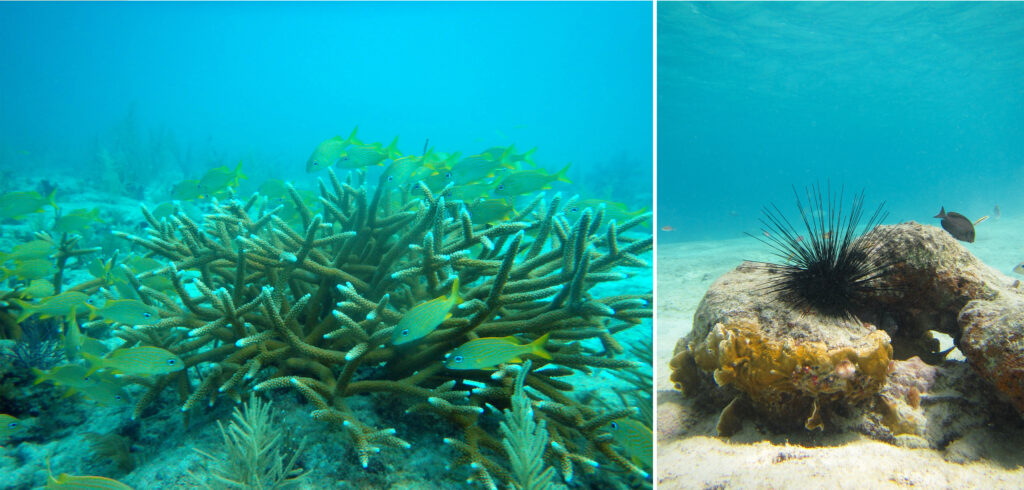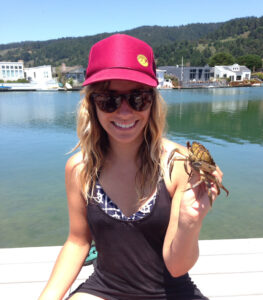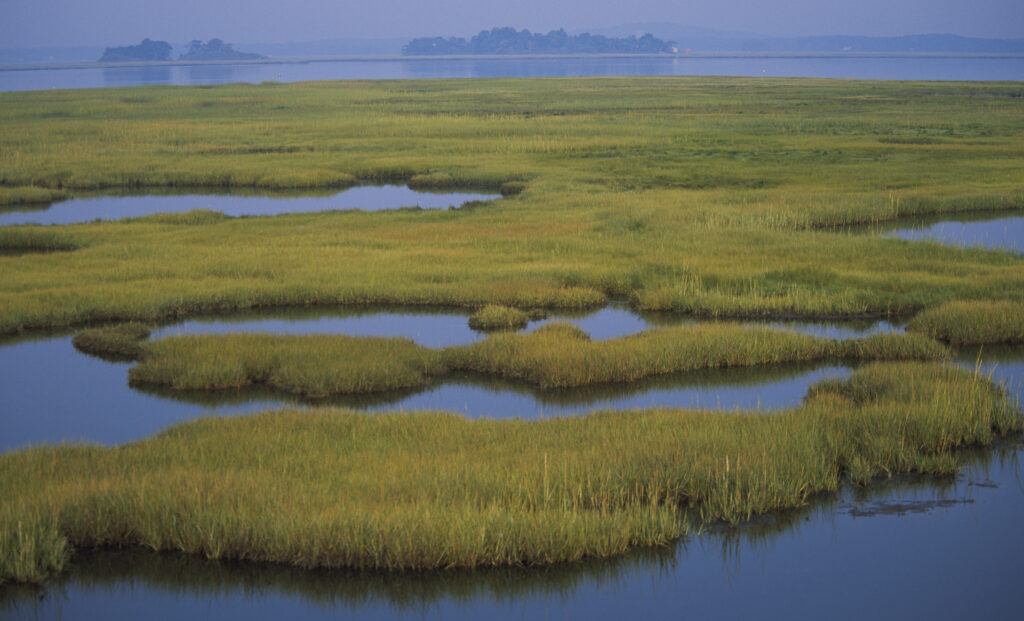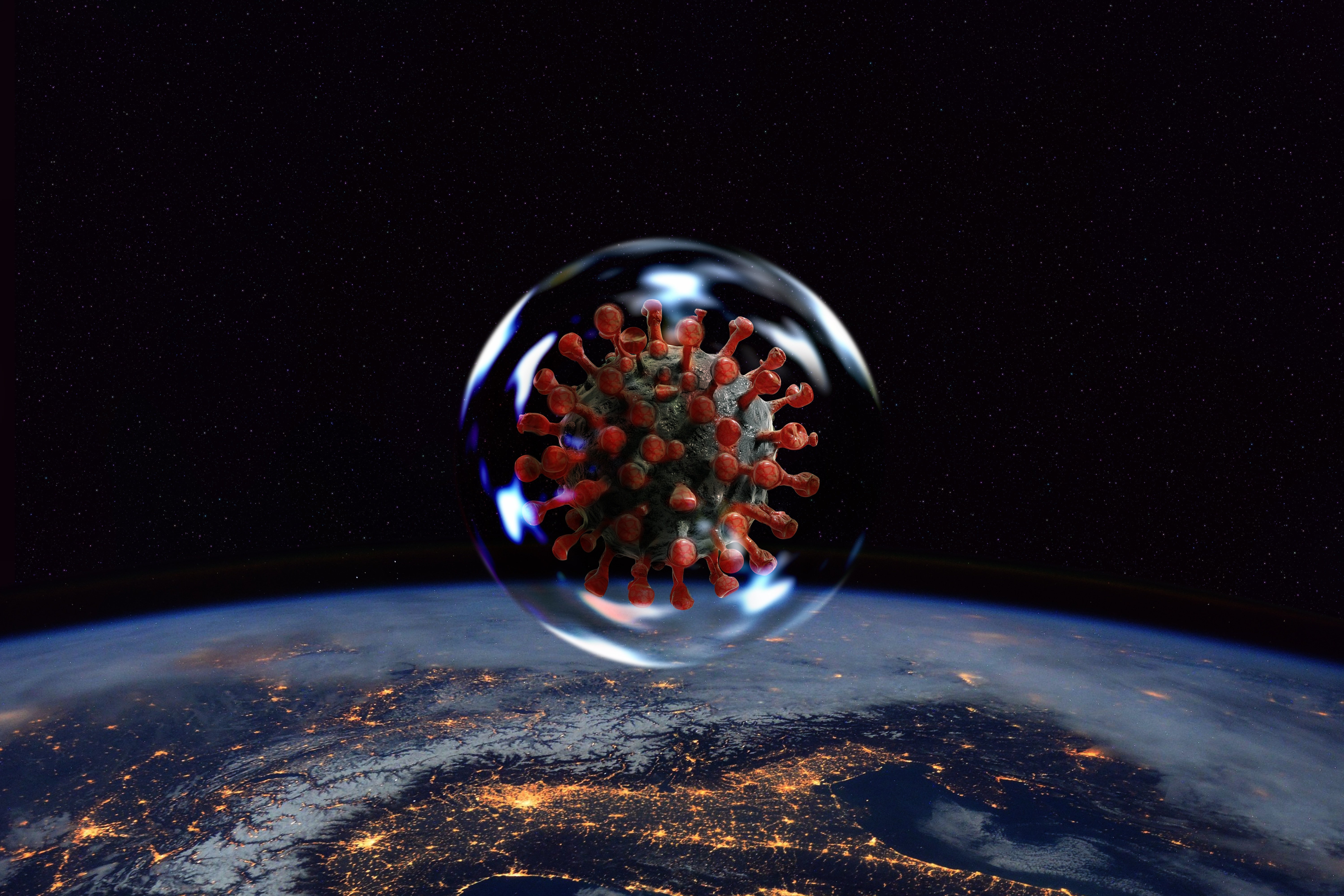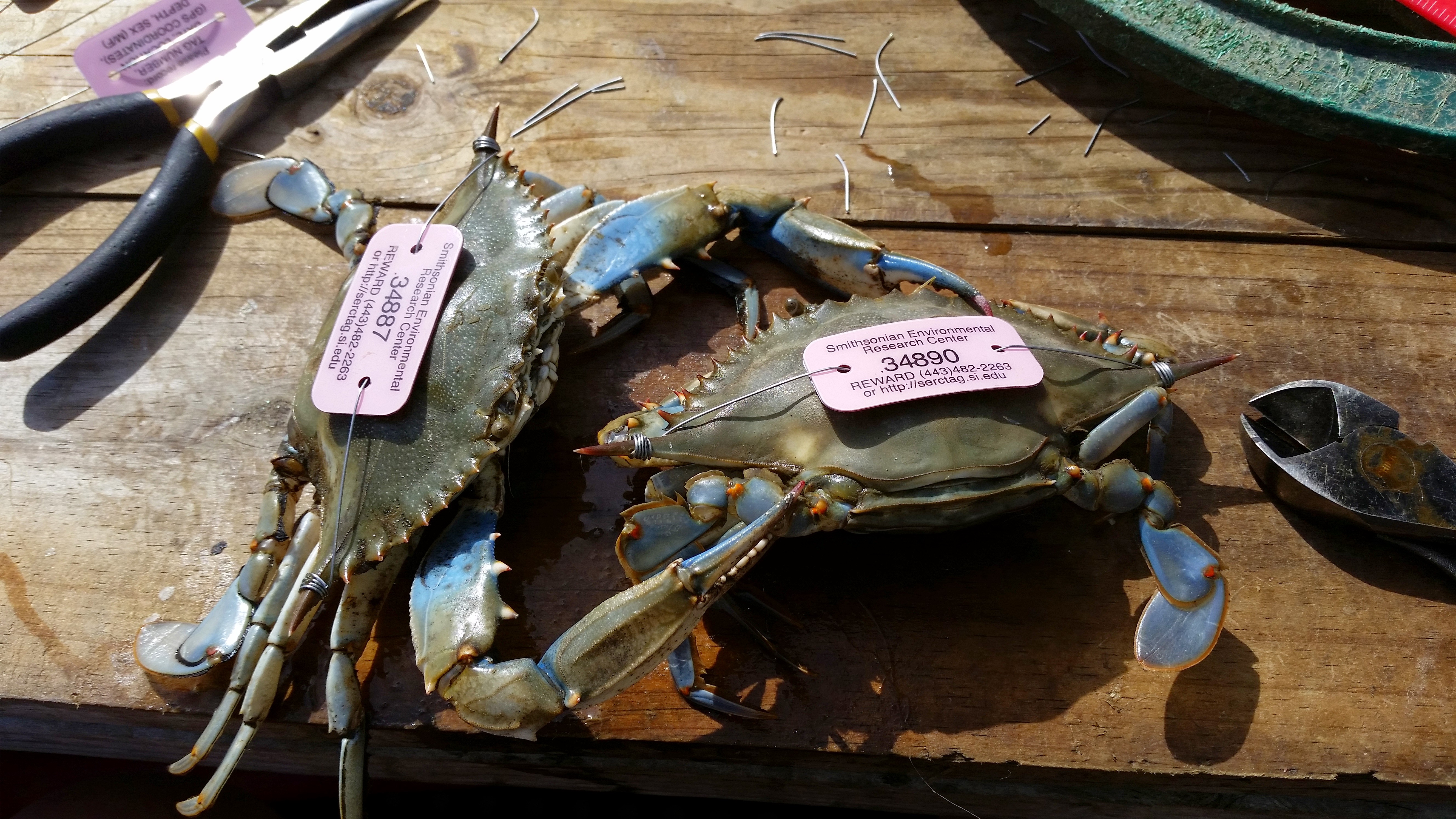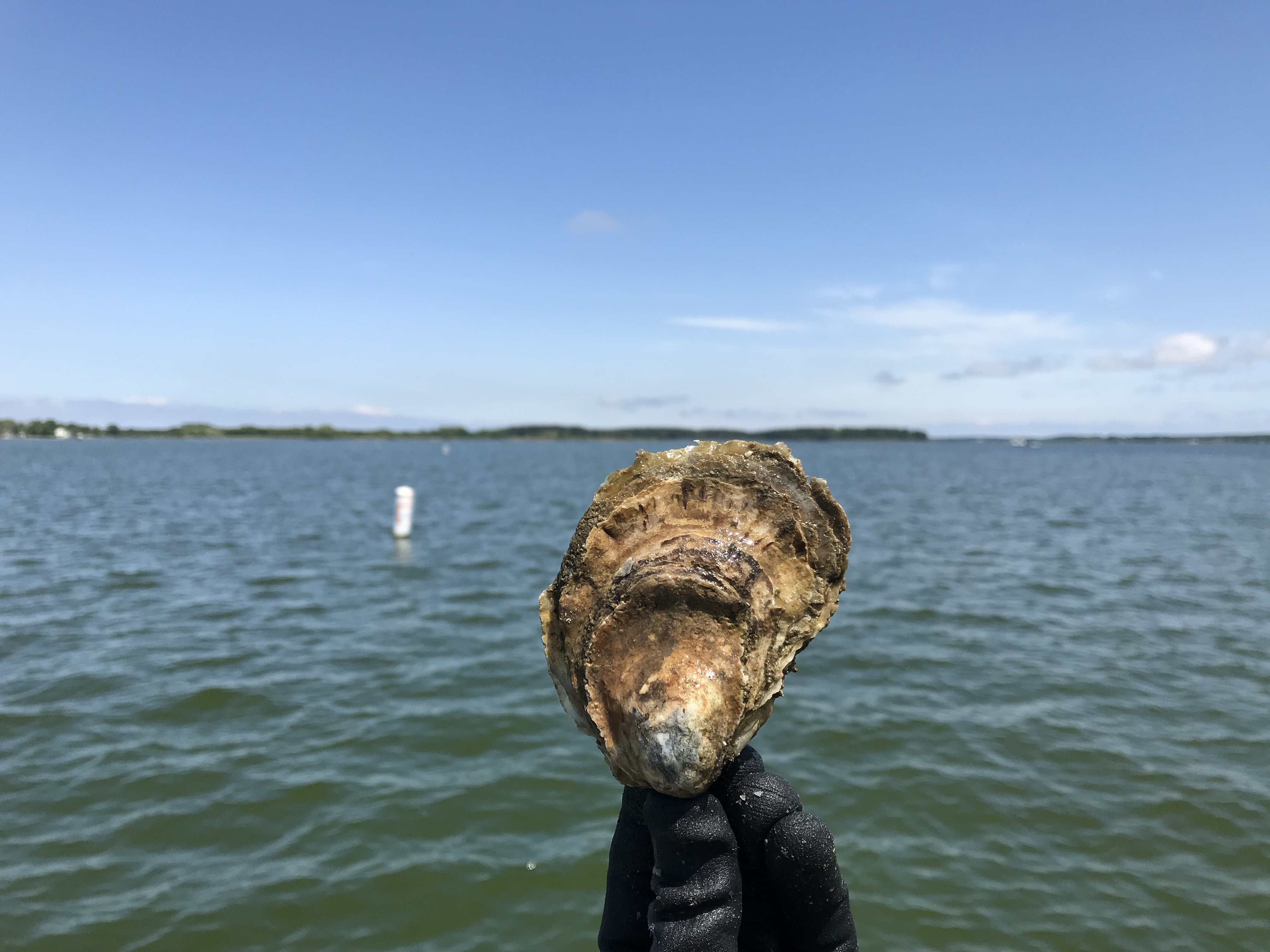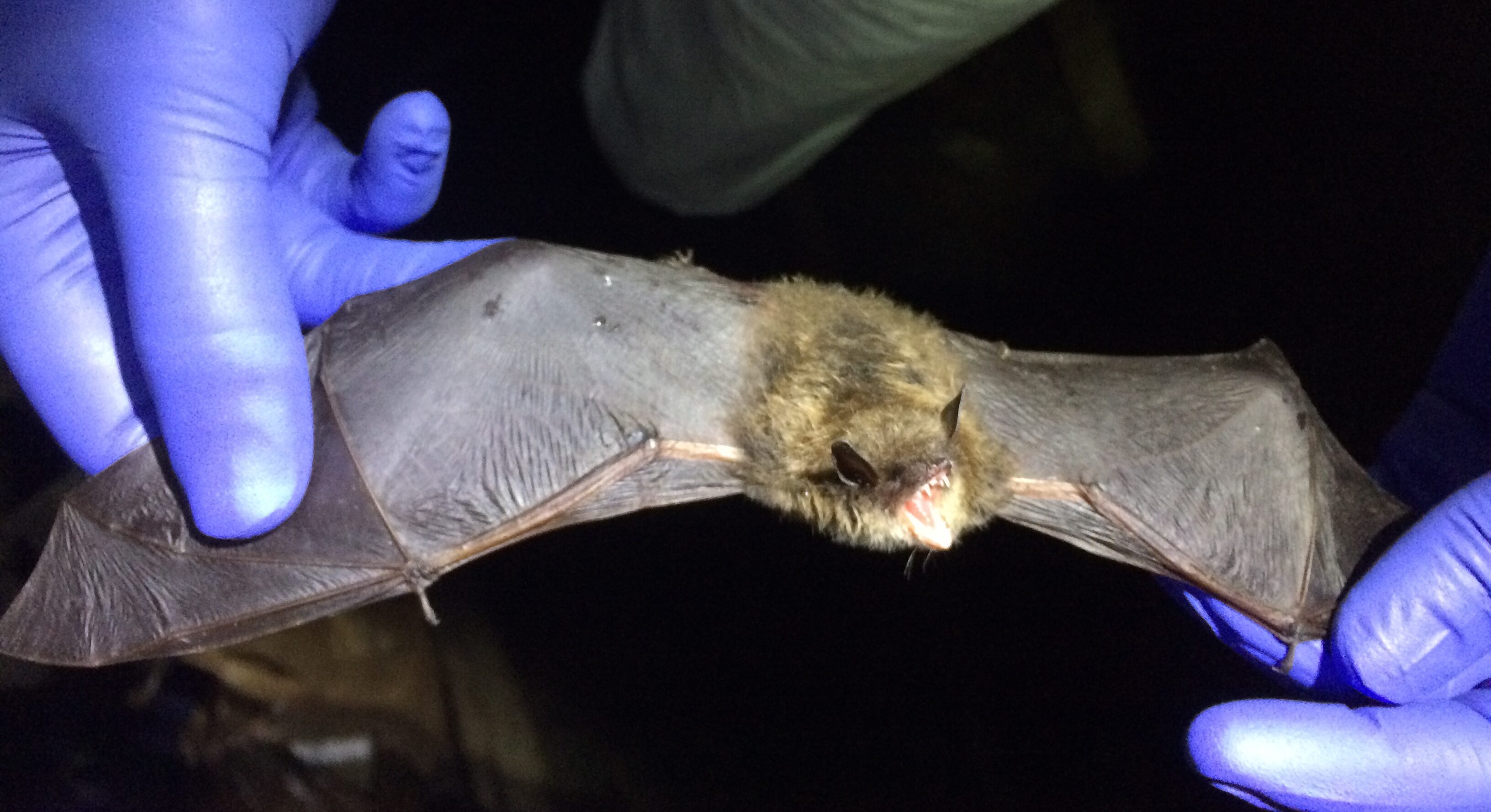by Marissa Sandoval
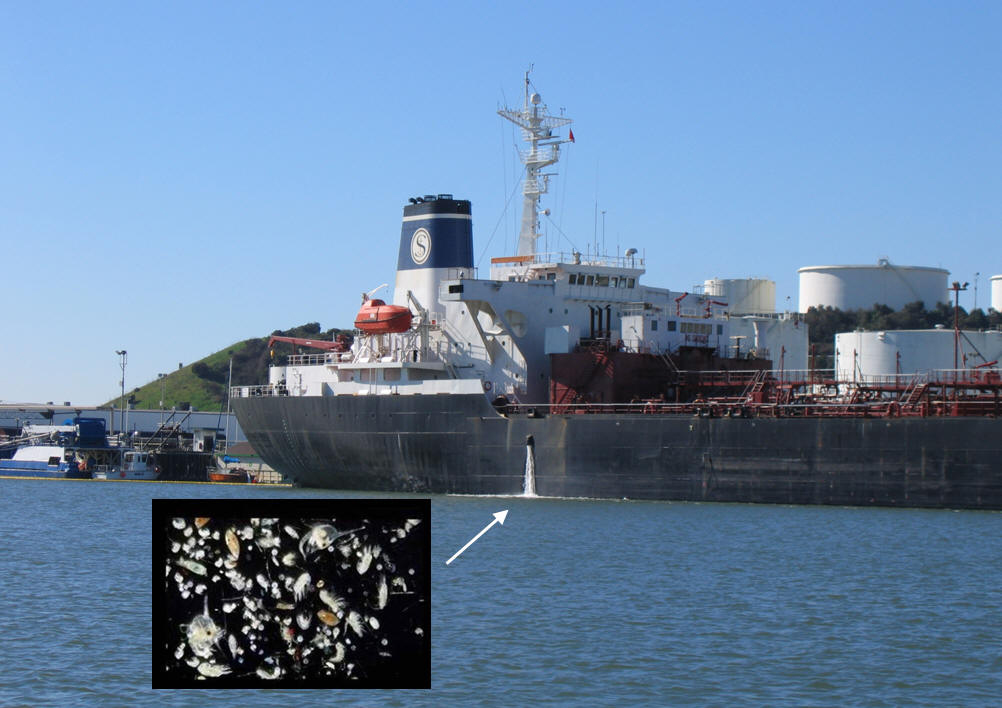
Many aquatic creatures live in the ballast water ships need for stability. But when ships discharge their ballast water, some of those creatures can become invasive. (Credit: Monaca Noble/SERC)
This is the first article in a three-part series which aims to explain the biosecurity concerns of ballast water and the work of the Smithsonian Environmental Research Center (SERC). Scientists in SERC’s Marine Invasions Lab have teamed up with a variety of organizations to research invasive species, on-board technology and shipping networks. The Marine Invasions Lab works from SERC’s main campus in Edgewater, Maryland, and its West Coast campus in Tiburon, California.
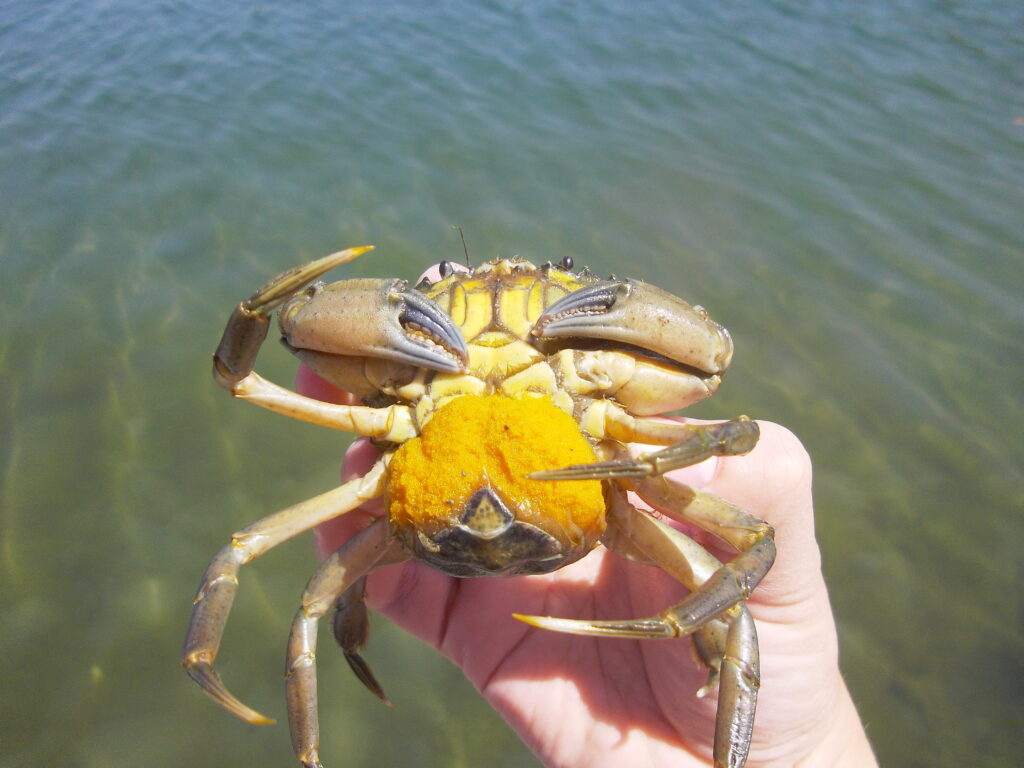
European green crab (Carcinus maenas), an invasive crustacean that’s caused economic and environmental problems on both U.S. coasts. (Credit: Brianna Tracy-Sawdey/SERC)
In the late 1980s, tiny crab larvae arrived in California through the water massive ships eject when they dock. The infamous European green crab had already been doing a number on the Eastern Seaboard, causing damages that would eventually reach over $22 million a year. Soon enough it was causing chaos on the West Coast as well, voraciously eating native crabs, oysters, and clams. The highly invasive crab serves as a cautionary tale of the never-ending struggles with hitchhiking marine invaders introduced via ballast water.


